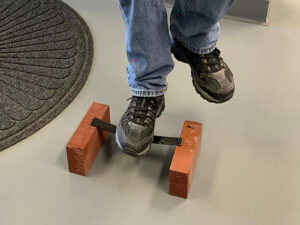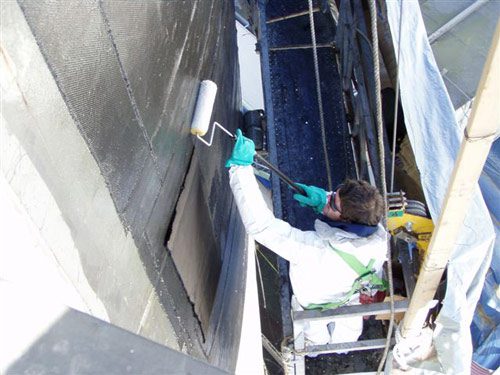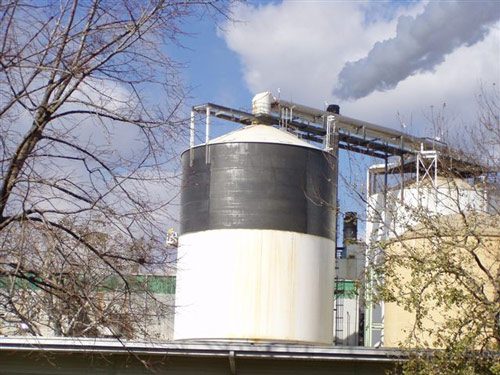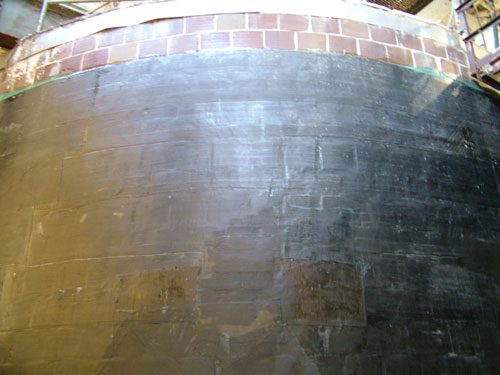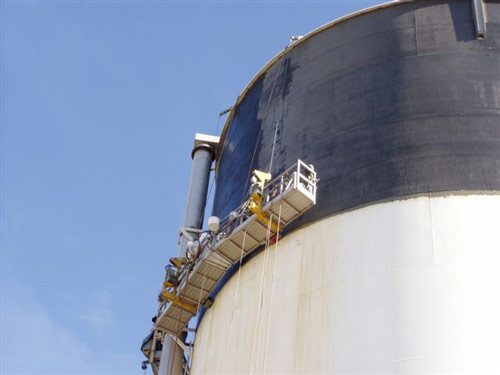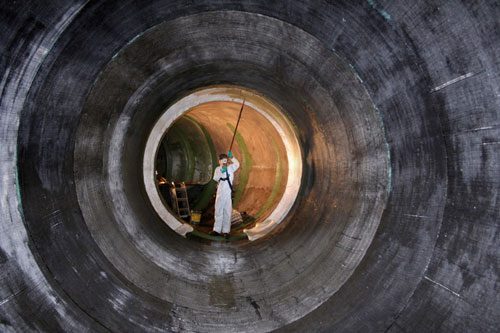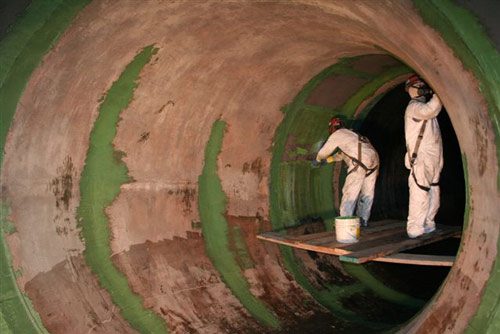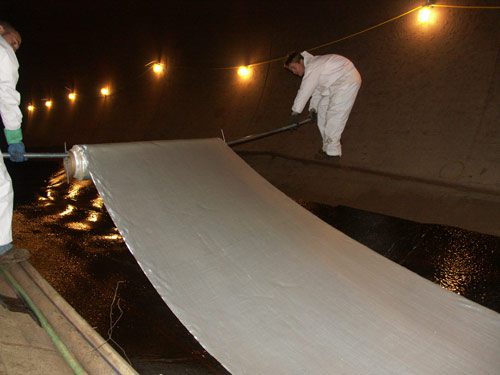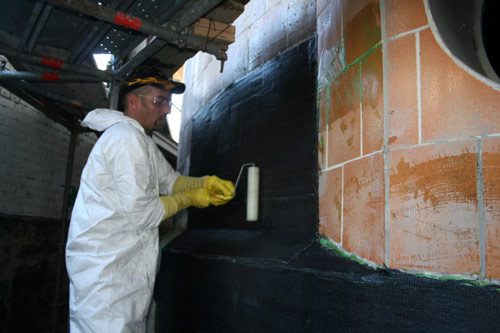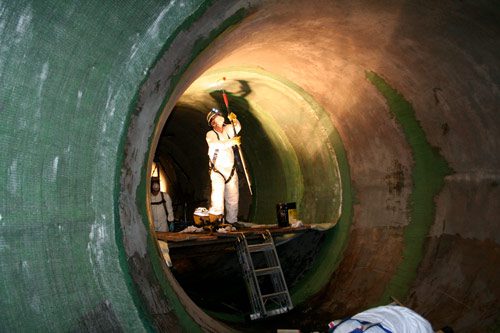Unidirectional Composite Strengthening Systems
Unidirectional composite strengthening systems that reinforce existing structures
Unidirectional fabrics are high performance, non-woven fabrics whose fibers run in a single direction. This product is designed to concentrate the density for maximum longitudinal tensile potential since there is no cross-section weave. This makes it easy to overlap the product at varying angle orientations to achieve strength without sacrificing stiffness.
This product is ideal for applications where front-to-back strength is needed, such as on boats and airplanes.
The unidirectional fabric consists of continuous fibers in the warp or 0° direction. Unidirectional fabrics offer the ability to place fiber in the component exactly where it is critical, and in the optimum quantity. Unidirectional fibers are straight and uncrimped resulting in the highest possible yield of properties from a fabric in composite component construction. Well suited for Alkali and chemical corrosion resistance of various building surfaces (piers, foundation walls, bridges, tunnels).
- Increases strength, stability and load-bearing capacity to extremely degraded vessels.
- Corrosion resistant, vibration resistant, high fatigue resistance, low thermal conductivity.
- Affordable option to preserve and increase the life of a structure that you otherwise thought you may need to completely replace.
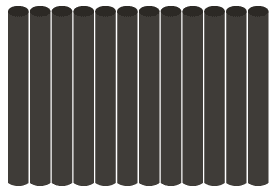
VERTICAL
UNIDIRECTIONAL WEAVE
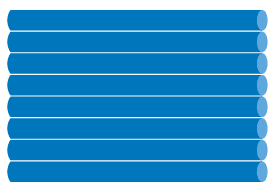
HORIZONTAL
UNIDIRECTIONAL WEAVE
Just How Strong Are Carbon Fiber Reinforced Polymers?
A customer covered a paint stick with CFRP. The result… strong enough to hold up a grown man. Imagine what CFRP can do for your degraded vessel that you don’t have the time or resources to completely replace right now.
Structural Restorations using Carbon Fiber-Reinforced Plastics (CFRP)
Gateway Composites carbon fiber fabric systems are designed specifically for structural strengthening applications on structures that have seen the harshest of corrosions. They are available in various weights, weaves and directionals of fabric to optimize the structural design. When you pair Gateway Composites CFRP with one of our tank lining systems, your vessel can be restored to its original operational standard. Our pre-formed structural carbon plates and strips are also often used in retrofit or upgrade systems.
Carbon Fiber Fabrics for Confining Vessels
Concrete and tile structures are susceptible to spalling after years of weathering, freeze/thaw cycles and continuous operation in harsh conditions. Gateway Composites carbon fiber fabric systems are highly effective for confinement of spalls, as they provide a corrosion-resistant exterior surface for industrial process equipment such as tanks, silos, chimneys, columns, beams, slaps and piping. These systems are typically installed in the horizontal (hoop) direction and eliminate spalling of concrete and masonry tile structures.
| Description | Fiber Input | Weave Construction |
Area Weight | Standard Width (yards) |
Standard Length (yards) |
| 12KUD300 | 12K | Unidirectional | 300g/m2 9 oz/yd2 | 12, 24, 50 | 100 |
| 12KUD400 | 12K | Unidirectional | 400g/m2 12 oz/yd2 | 12, 24, 50 | 100 |
| 12KUD610 | 12K, 24K | Unidirectional | 610g/m2 18 oz/yd2 | 12, 24, 50 | 100 |
| 12KUD810 | 12K, 24K | Unidirectional | 810g/m2 24 oz/yd2 | 12, 24, 50 | 100 |
